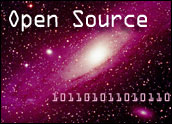TurboLinux, formerly known as Pacific HiTech, originated in Japan and has aggressively pursued open-source software market opportunities in China, expanded international operations into Latin America, Europe and elsewhere in Asia-Pacific, and moved into North America by establishing a headquarters in San Francisco, California.
In the following exclusive interview with the E-Commerce Times, TurboLinux president and co-founder Cliff Miller discusses his company’s role in the e-business landscape, as well as Microsoft, IPOs and all things Linux.
Q What is the background of your company?
A We were a CD-ROM publisher for a few years. We got involved with Linux rather early on, in 1993, a year after we had started the company. Then our involvement with Linux grew until about 1996 or 1997, when we decided to focus all of our efforts on Linux.
Just last year, we got our first round of funding through Intel, August Capital and Broadview. We got our second round of funding, which just closed in January, with over 20 corporate investors, including Dell, Compaq, Novell, BEA, NEC, Seagate and so forth. We have been focusing our development efforts on clustering. We’re also very strong in double byte computing, meaning getting Japanese, Chinese and Korean to work well with the TurboLinux operating system.
Q What is TurboLinux’s corporate mission?
A In essence, what we do is provide a base core Linux operating system on which we integrate and develop applications and systems. We’re a software company and we drive our revenues from selling software. We have a strong support team that goes along with that, but another important part of our company is that we’re an international company. Not just in having offices overseas, but as a part of our corporate culture.
Q What are the unique opportunities and challenges facing TurboLinux as it expands internationally, and which markets do you find particularly promising?
A Australia and some of the smaller Asian countries like Korea, Taiwan, Singapore, and so on, are important. But Japan, China and the United States are going to be extremely important over the next 5 to 10 years, for different reasons.
The U.S. has been the traditional leader in many areas of technology, and software is certainly one of them. Japan is the second largest economy in the world, very sophisticated in many areas of technology, and once they latch onto something, they really go for it with a passion. So I think Linux will do very, very well once it catches on there.
And then China is very interesting for a number of reasons. One is that the economy is growing so fast. They obviously have a lot of people there and they also have a very small legacy of installed computers. So, there’s a great opportunity in China for Linux to become adopted as their preferred standard operating system over anything else.
I see a huge business opportunity in providing some of the missing pieces for Linux. Most of the large computer companies — hardware and software manufacturers — have embraced Linux to some degree. They see the Linux market as being potentially very, very large. They’re getting inquiries from their customers wanting products running on Linux, and so they’re trying to address those needs.
But we also need to discuss international areas and the fact that there’s a big opportunity outside the United States. An important part of our business has been filling the needs of different users speaking different languages. That’s important for giving them products that they can use and feel comfortable with, and for being able to do business on the terms of the local and the regional business partners. I see a big opportunity overseas for growth in Linux.
Q What does the open-source model represent?
A You can look at the open-source model from at least two standpoints — as a business model and as a development model. It makes more sense to look at it just from the development model, because there are several different business models that can take advantage of open-source software techniques in their business. But, if we look at it from a development standpoint, what you have is really a vast army of users, programmers and contributors to the Linux operating system. That additionally extends beyond the core operating system to applications. That’s why being open is so important, because it lets other people fiddle around with your code and actually fix it or improve it. Incrementally, the software improves quite dramatically over a period of time. If you look at it from a business model standpoint, it’s not obvious how you would make money from running a business off of open-source software. I think that one way to do that is by saying that all software is free, in the sense that you don’t have to pay money for it. So, you don’t sell software, you go after the services market, and that’s what most open-source companies are doing. We put something on there that people will pay for, not necessarily because they have to, but because they want these things and they’re willing to pay for them. And it’s anything from bundling and integrating third-party software, to developing our own software that goes beyond the infrastructure and it really gives certain features that users are looking for and willing to pay for. But they may not necessarily need them to be open-source software. Our model is more traditional, it’s not based on Internet or Web eyeballs, like some companies are going after, or even a pure support strategy. It’s really software licensing.



































Social Media
See all Social Media